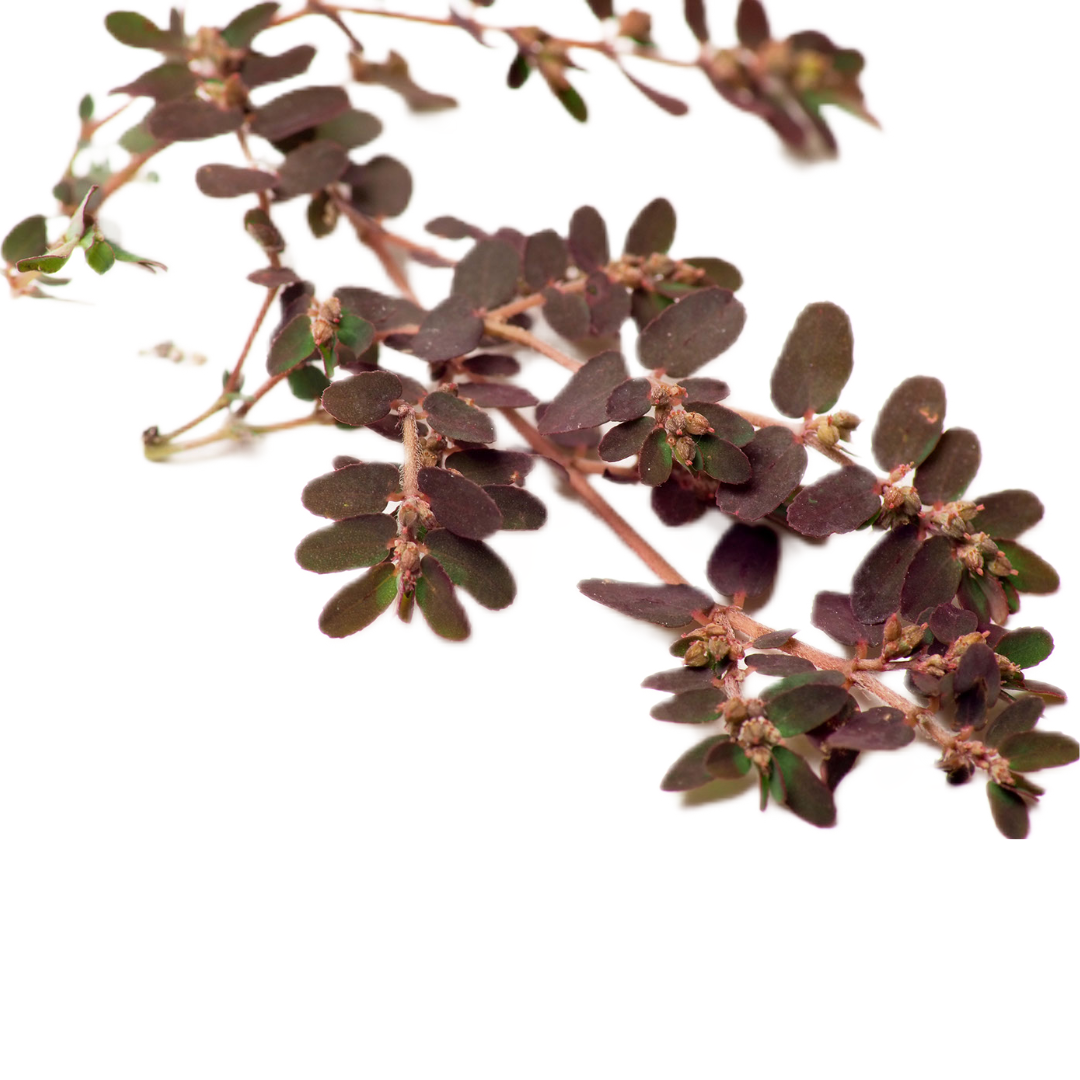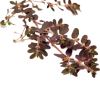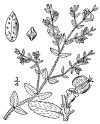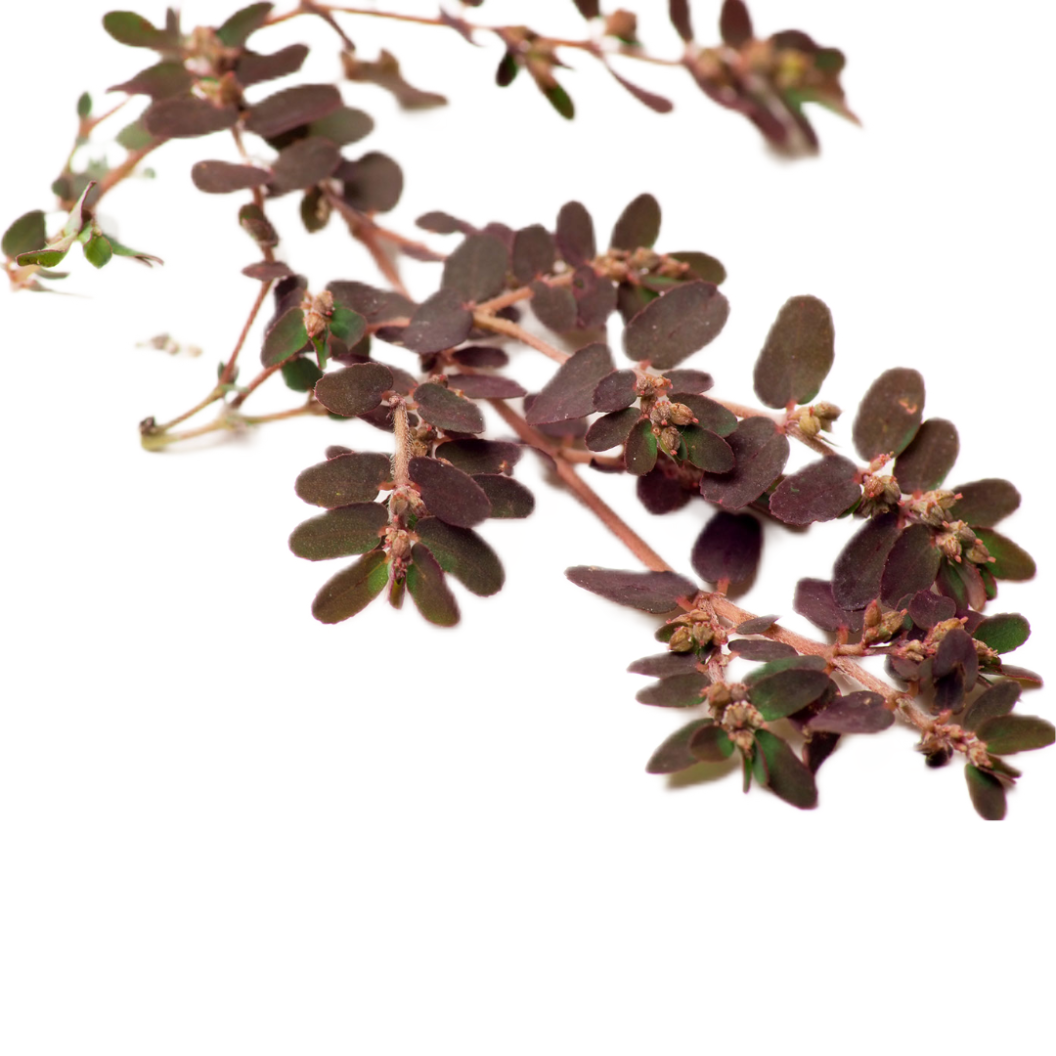






Prostrate Spurge
DESCRIPTION: Prostrate spurge is a common weed in North America. The plant can grow up to a foot tall. It spreads quickly and easily, forming a dense mat of foliage that can quickly take over a lawn or garden bed if left unchecked. Prostrate spurge produces small pink or white flowers that turn into seed pods that can scatter and grow into new plants. Despite being a nuissance as a weed, some people also use it for medicinal purposes, as it is believed to have anti-inflamatory and pain-relieving properties. That said, the plant is known to produce a milky sap that contains latex and other chemicals that are considered toxic to humans and animals if ingested in large quantities or if it comes in contact with the skin or eyes. It is worth noting that plants in the Euphorbia family produce a similar sap, and it is not unusual for plants to have some level of toxicity as a defense mechanism against herbivores.
SCIENTIFIC NAME: Euphorbia maculata (formerly named Chamaesyce maculata)
OTHER NAMES: Spotted Spurge, Spotted Sandmat, Milk Purslane, Frog's Spurge
LEAF TYPE: Broadleaf
FLOWERS: Prostrate spurge floers are small, delicate, and typically pink or white in color. They grow in clusters at the end of the plant's stems and have a distinct, star-shaped appearance. The flowers are quite small, less than a quarter of an inch in diameter, and have five petals that spread out from the center. Despite the little splash of color these flowers can add to a lawn or gardern, they are widely considered a nuissance weed.
LEAVES: The leaves of prostrate spurge are small, oval-shaped, and bright green in color. They have a smooth, shiny surface and are arranged in an alternating pattern along the plant's stems. The leaves are relatively thin and delicate, and they have a distinct dark purpleish spot in the center that makes them easy to identify. The edges of the leaves are slightly serrated, but the serrations are not particularly sharp. Prostrate spurge leaves are quite small, usually less than half an inch long and a quarter inch wide, and they are arranged in a flat, spreading pattern that hugs the ground. The leaves of this plant can quickly form a dense mat of foliage, which helps it compete with other plants for resources.
LIFE CYCLE: Annual
HOW TO IDENTIFY: Spotted spurge can be easily identified by its small, oval-shaped leaves that have a dark spot in the center. The leaves are bright green and arranged along thin stems that can grow up to a foot long. The plant grows low to the ground and spreads quickly, forming a dense mat of foliage. The leaves and stems exude a milky sap when broken or crushed, which can be irritating to the skin and eyes. In the summer and fall, spotted spurge produces small, delicate pink or white flowers that have a star-shaped appearance. These flowers are quite small, usually less than a quarter of an inch in diameter, and grow in clusters at the end of the plant's stems. If left unchecked, spotted spurge can quickly take over a lawn or garden bed, so it's important to remove it as soon as it is identified.
MECHANICAL CONTROL RECOMMENDATIONS:
1. Hand pulling - More Info
2. Mowing - More Info
3. Mulching - More Info
4. Solarization - More Info
5. Flame Weeding - More Info
6. Soil Disturbance - More Info
7. Manual Cultivation - More Info
8. Preventative Measures - More Info
CHEMISTRY RECOMMENDATIONS:
"Pre-emergent herbicides:
Prodiamine: This herbicide is effective against a wide range of annual grasses and broadleaf weeds, including prostrate spurge. It forms a barrier in the soil that prevents weed seedlings from emerging.
Pendimethalin: Pendimethalin is a pre-emergent herbicide that provides control over various grasses and broadleaf weeds, including prostrate spurge. It works by inhibiting seed germination and early seedling development.
Dithiopyr: This herbicide has both pre-emergent and early post-emergent activity. It works by preventing cell division in emerging weed seedlings, including prostrate spurge.
Isoxaben: Isoxaben is effective against a variety of broadleaf weeds, including prostrate spurge. It disrupts cell wall formation in germinating weed seedlings.
Oxadiazon: Oxadiazon is a pre-emergent herbicide that provides control over certain annual grasses and broadleaf weeds. It works by inhibiting cell growth in germinating seeds.
Trifluralin: Trifluralin is a pre-emergent herbicide that inhibits root and shoot development in emerging weed seedlings, preventing them from growing.
Benefin + Trifluralin: This combination of herbicides provides extended pre-emergent control against various annual grasses and broadleaf weeds, including prostrate spurge.
Dimethenamid-P: This herbicide works by inhibiting cell division and elongation in germinating weed seedlings, preventing their growth.
Prodiamine + Sulfentrazone: This combination offers both pre-emergent and post-emergent control. Sulfentrazone adds post-emergent control to target weeds that might have already germinated.
Post-emergent herbicides:
Glyphosate: Glyphosate is a non-selective herbicide effective against a wide range of weeds, including prostrate spurge. However, it can also harm desirable plants, so use it with caution and apply directly to the weeds you want to eliminate.
2,4-D: This selective broadleaf herbicide targets a variety of broadleaf weeds, including prostrate spurge. It should be used carefully to avoid harming desirable plants.
Dicamba: Dicamba is another selective broadleaf herbicide that targets weeds like prostrate spurge. It's often used in combination with other herbicides for improved effectiveness.
Triclopyr: Triclopyr is effective against a range of broadleaf weeds, including prostrate spurge. It can be used on lawns, landscapes, and non-crop areas.
Sulfentrazone: Sulfentrazone has both pre- and post-emergent activity and is effective against prostrate spurge. It's often used in combination with other herbicides.
Metsulfuron-methyl: This herbicide is effective against a variety of broadleaf weeds, including prostrate spurge. It should be used with care to avoid damage to non-target plants.
Carfentrazone-ethyl: Carfentrazone-ethyl is a contact herbicide that works quickly to control weeds like prostrate spurge. It's often used in combination with other herbicides.
Quinclorac: Quinclorac is a selective herbicide effective against a wide range of broadleaf and grassy weeds, including prostrate spurge. It's often used on lawns and turf.
Clopyralid: Clopyralid is a selective herbicide that targets many broadleaf weeds, including prostrate spurge. It's often used in combination with other herbicides.
Selective herbicides:
2,4-D: 2,4-D is a widely used selective broadleaf herbicide effective against many types of broadleaf weeds, including prostrate spurge. It's often used on lawns, golf courses, and other turf areas.
Dicamba: Dicamba is another selective broadleaf herbicide that targets weeds like prostrate spurge. It's commonly used in combination with other herbicides to enhance effectiveness.
Triclopyr: Triclopyr is effective against a variety of broadleaf weeds, including prostrate spurge. It's often used in lawns, pastures, and non-crop areas.
MCPA: MCPA is a selective herbicide that targets a range of broadleaf weeds, including prostrate spurge. It's used in lawns, golf courses, and other turf settings.
Clopyralid: Clopyralid is a selective herbicide that targets many broadleaf weeds, including prostrate spurge. It's commonly used in turf areas, pastures, and non-crop lands.
Quinclorac: Quinclorac is effective against both broadleaf and grassy weeds, including prostrate spurge. It's often used on lawns and turf.
Sulfentrazone: Sulfentrazone has both pre- and post-emergent activity and is effective against prostrate spurge. It can be used in turf and non-crop areas.
Fluroxypyr: Fluroxypyr is a selective herbicide effective against many broadleaf weeds, including prostrate spurge. It's used in lawns, turf, and non-crop areas.
Halosulfuron-methyl: This herbicide targets a variety of broadleaf weeds, including prostrate spurge. It's often used in turf and non-crop areas.
Non-Selective herbicides:
Glyphosate: Glyphosate is one of the most commonly used non-selective herbicides. It effectively kills a wide range of plants, including prostrate spurge. It's important to apply it carefully to avoid harming desirable vegetation.
Glufosinate-ammonium: This herbicide is effective against many weeds, including prostrate spurge. It's often used in non-crop areas and around landscapes.
Paraquat: Paraquat is a fast-acting non-selective herbicide that can provide quick control of prostrate spurge. It's often used for spot treatments and is toxic to both plants and animals, so careful handling is crucial.
Diquat: Diquat is another non-selective herbicide used for quick burn-down of vegetation. It's often used in aquatic areas and non-crop settings.
Pelargonic Acid: Also known as ""horticultural vinegar"" or ""natural weed killer,"" pelargonic acid-based products are non-selective herbicides that burn down foliage on contact. They are considered more environmentally friendly but may require repeat applications.
Acetic Acid: Acetic acid, commonly known as vinegar, can be used as a non-selective herbicide. It's often used in higher concentrations as an alternative to chemical herbicides.
Recommended Prevention
Recommended Control

